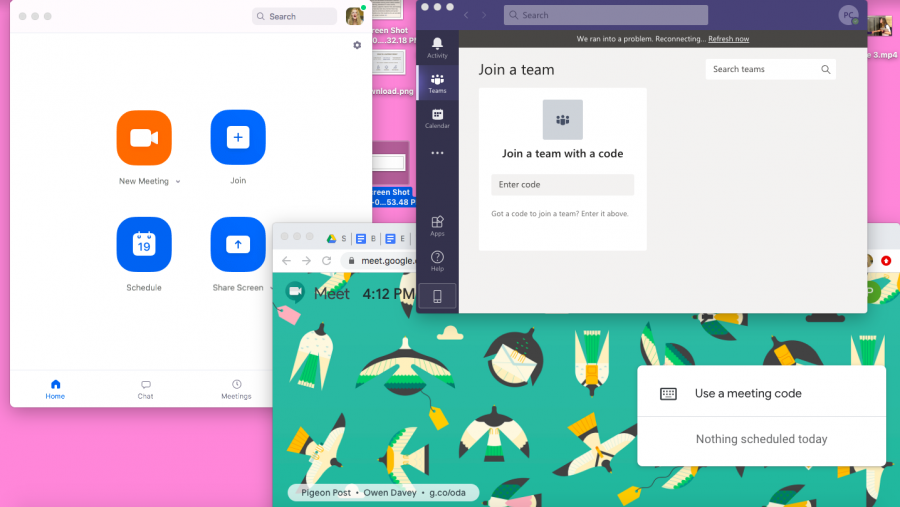How to combat ‘Zoom fatigue’
September 9, 2020
When it comes to school class, office meetings, group projects or pretty much anything that requires collaboration, virtual calls have become the new normal. Manual has cycled through the many different online meeting places, from Zoom to Google Meet to Microsoft Teams. Teachers and students alike have to adjust to creating meeting links, learning proper meeting etiquettes such as muting/unmuting and the “hand-raise” function,and having to settle for at-home learning.
While there are benefits to distance learning — being in the comfort of your own home, a more flexible schedule and more time to sleep in — the act of sitting or teaching in front of a screen of silent participants can be taxing on the brain. You may find yourself tired of staring at a bright screen after a 40 or 80-minute class period only to hop on to the next class 5 minutes later.
If this is the case, you’re not the only one; in fact, it is so common that it has been coined with the slang term “Zoom fatigue”. This refers to the mental exhaustion you feel when you are continually meeting with people on virtual platforms. This rings one thing true: humans thrive on communication and social interaction, so not having that face-to-face contact with teachers, friends and classmates can be a learning barrier. According to cybersecurity specialist Andrew Franklin, the absence of nonverbal cues make it harder to stay engaged with the speaker. Your brain is listening even when no one is talking; body position, eye contact and hand motions play a huge role in gauging participation and interest. When these are eliminated, it is hard to feel like you’re talking and listening to an actual audience.
Additionally, the extra screen time in our already technology-heavy lives can negatively impact eyesight and cause irregular sleep patterns. When we are only linked to our peers through a screen, much of our daily life is looking at the blue light illuminated from the computer. This results in eye strain that can lead to dry eyes, headaches, blurred vision and neck/shoulder pain.
There is little research done on this new phenomenon; however, small lifestyle changes and switching up your learning environment can make the impacts of “Zoom fatigue” a little less intense. Here are a few tips:
1. Don’t multitask
Video calls make it easier than ever to lose focus. When you have to look at 10 different people with all different backgrounds and scenery, you experience sensory overload. Also, the constant gaze of many different people at once can overwhelm you to the point where looking at your phone and staring out the window is easier. However, the APA reports that switching between tasks lowers your productivity levels by 40%. Make sure you close all additional tabs, put your phone away and stay completely focused on the meeting. This will make the call less exhausting.
2. Use the 20-20-20 rule
One way to limit screen time is by trying the 20-20-20 rule, popularized by optometrist Dr. Jeffery Anshel. This means taking a 20-second break from looking at a screen every 20 minutes. During this break, focus on an object 20 feet away. Anshel developed this method to reduce eye strain from bright screens. Both the American Optometric Association and the American Academy of Ophthalmology recommend it.
3. Take breaks
Because a huge chunk of your day is dedicated to screen time, when you’re not logging onto calls it is important to take time away from it. You may want to read a book, walk your dog, or take a nap. Whatever it is, time away from the computer will make it less tiring to come back to. If screentime is unavoidable, try minimizing the tab or looking away from the screen for a few seconds; even the little things can be helpful.
4. Change locations
If you’re tired of sitting in the same place every time you get on a call, consider changing the scenery. Switch rooms in your house, visit your local coffee shop, or even set-up a workspace outside on a sunny day. An environment change can make you feel refreshed and better focused.









